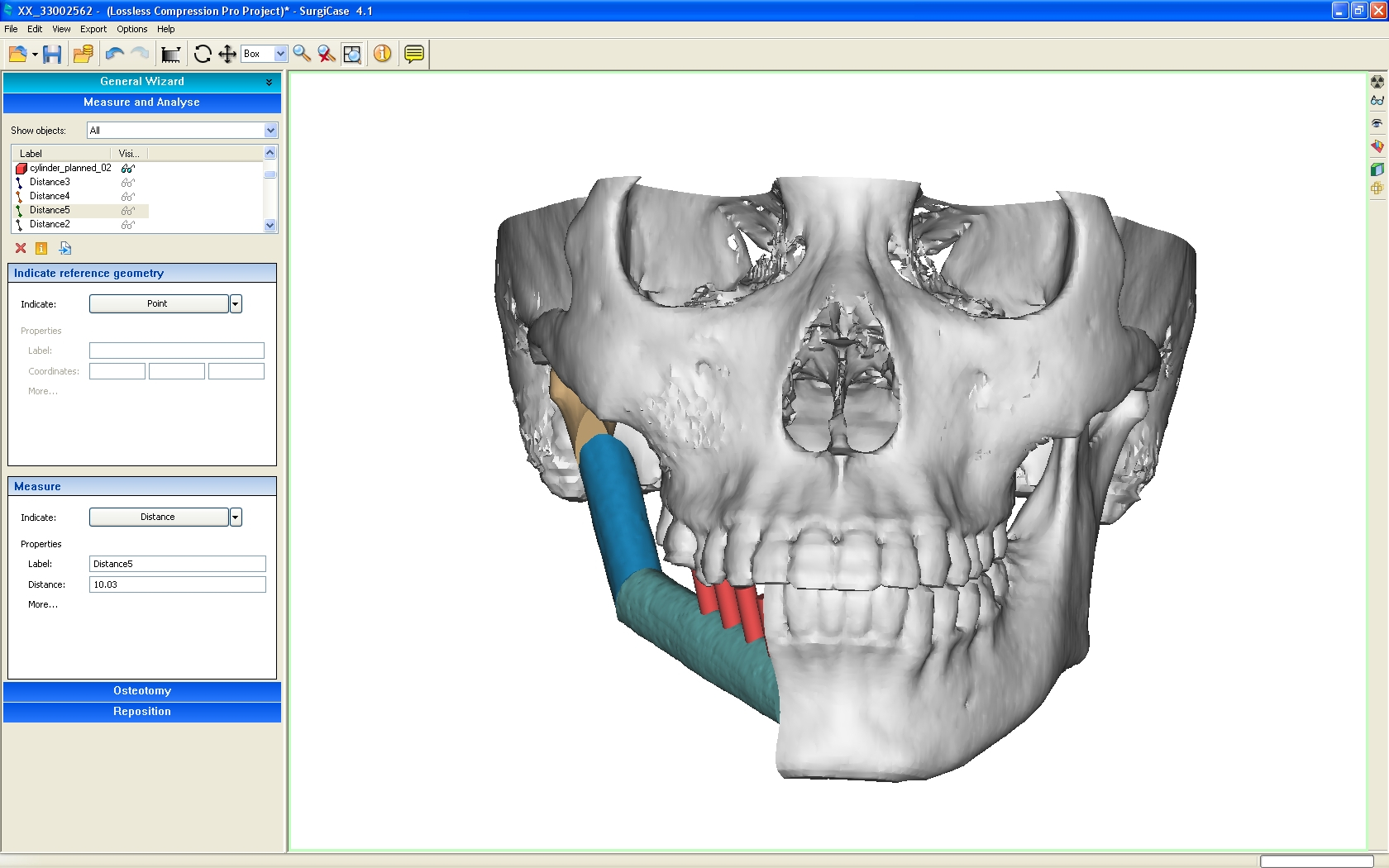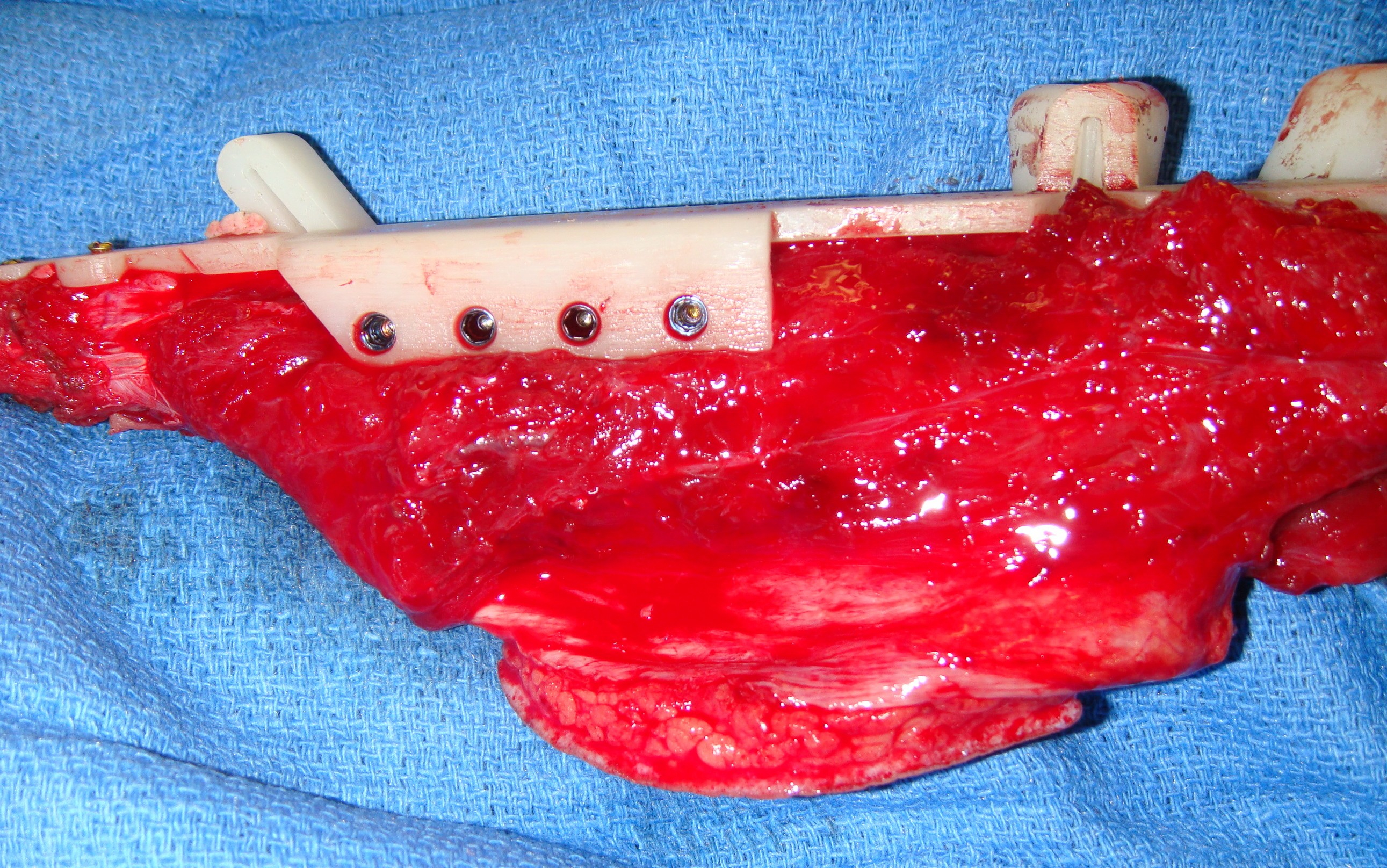Monday, October 4, 2010 - 9:35 AM
18408
Computer-Aided Surgical Simulation in Mandibular Reconstruction: Maximizing Outcomes in Single-Stage Fibula Free Flap Reconstruction with Immediate Dental Implants
Introduction
The fibula osteocutaneous free flap provides the ideal vascularized tissue for reconstruction of segmental mandibular defects. Over the past decade our approach to these cases has evolved to provide our patients single stage reconstructions with satisfactory orthognathic and aesthetic outcomes. The modalities we have employed for surgical planning progressed from gross intraoperative measurements, to preoperative planning based on stereolithographic models and now computer-aided three dimensional planning with prefabricated splints and jigs to allow precise double-barrel restoration of the mandibular arch and contour, and implant position.
Methods
High-resolution computed tomography scan of the patient's craniofacial skeleton and lower extremities are obtained. The images are forwarded to the modeling company (Medical Modeling, Inc, Golden, CO) where they are converted into 3D, virtual reconstructions. The parameters for planning mandibular reconstruction are the margins of resection, positioning of fibula in relation to the remaining native mandible and location for osseointegrated implant placement. The 3D fibular image is superimposed on the expected mandibular defect allowing planning of fibular osteotomies and implant position. Jigs are created to reproduce the identical angles for osteotomies and implant position in situ (Fig 1). Intraoperatively, the jigs are applied to the fibula to guide osteotomies, plate fixation and dental implant placement (Fig 2). A retrospective review was performed to evaluate outcomes of our computer-aided planning method reconstructions performed from 2007-2010.
Results
A total of 20 patients underwent 3D computer-aided preplanning. Their mean age was 40.2 years. Eight patients had immediate implants placed, the last 5 of which were performed using prefabricated splints. Twelve males and eight females underwent reconstruction. The distribution of pathology requiring resection was: 55% malignant disease, 30% Ameloblastoma, 10% osteoradionecrosis and 5% osteomyelitis. The total number of dental implants was 31 in eight patients. The implant success rate was 93.6%. Two implants failed (6.4%). Reasons for failure were peri-implantitis (3.2%) and delayed failure from excessive occlusal load (3.2%). Overlay comparison of preoperative planned reconstruction and 3D reconstruction of the postoperative result revealed a mean difference of 0.95mm.
Conclusions
Computer-aided preoperative planning for mandibular reconstruction produces precise reproduction of the mandibular arch and contour. The ideal height of the fibula and precise intraoperative placement of dental implants facilitates dental restoration. Immediate implant placement is safe and significantly accelerates return of function.
Figure 1. Representative completed computer-assisted plan
Figure 2. Jig for osteotomies in situ on the fibula with splint for immediate dental implants (in place) based on computer-aided plan from Figure 1. 
See more of Hand & Upper Extremity (5 mins)
Back to 2010am Complete Scientific Program

